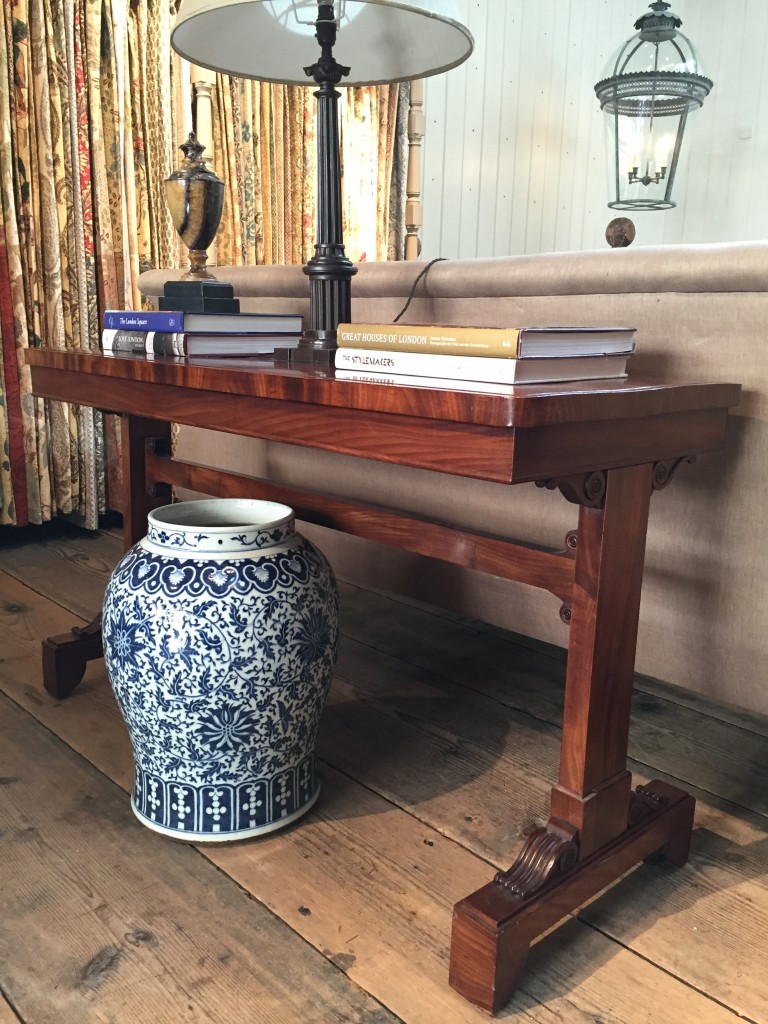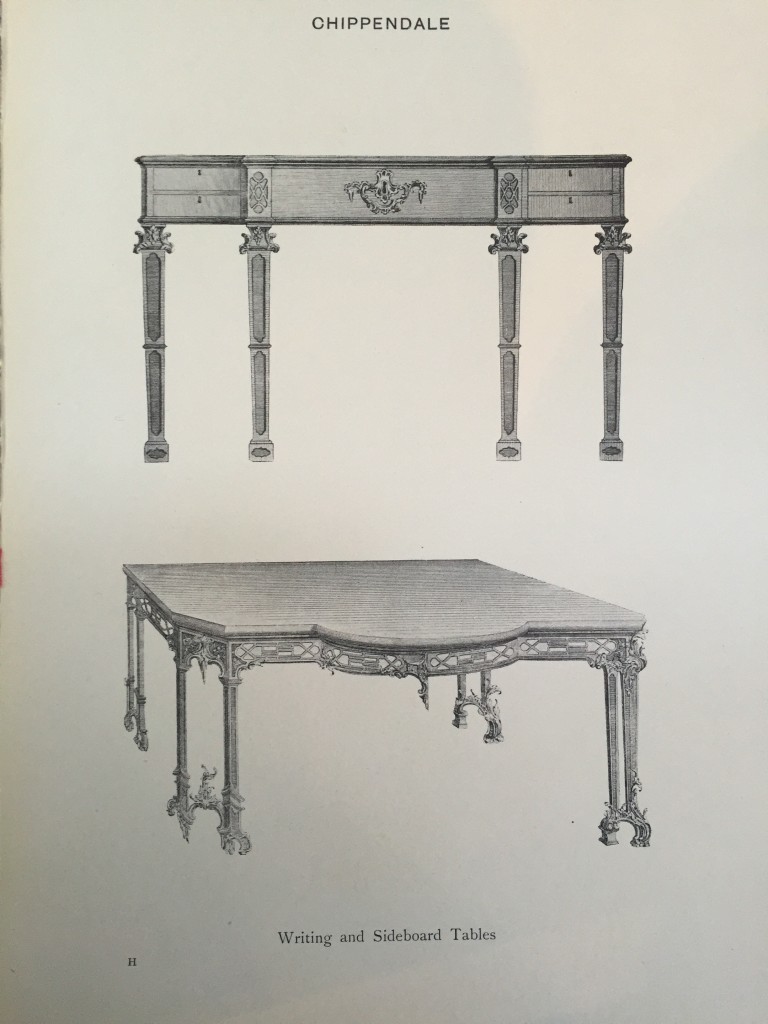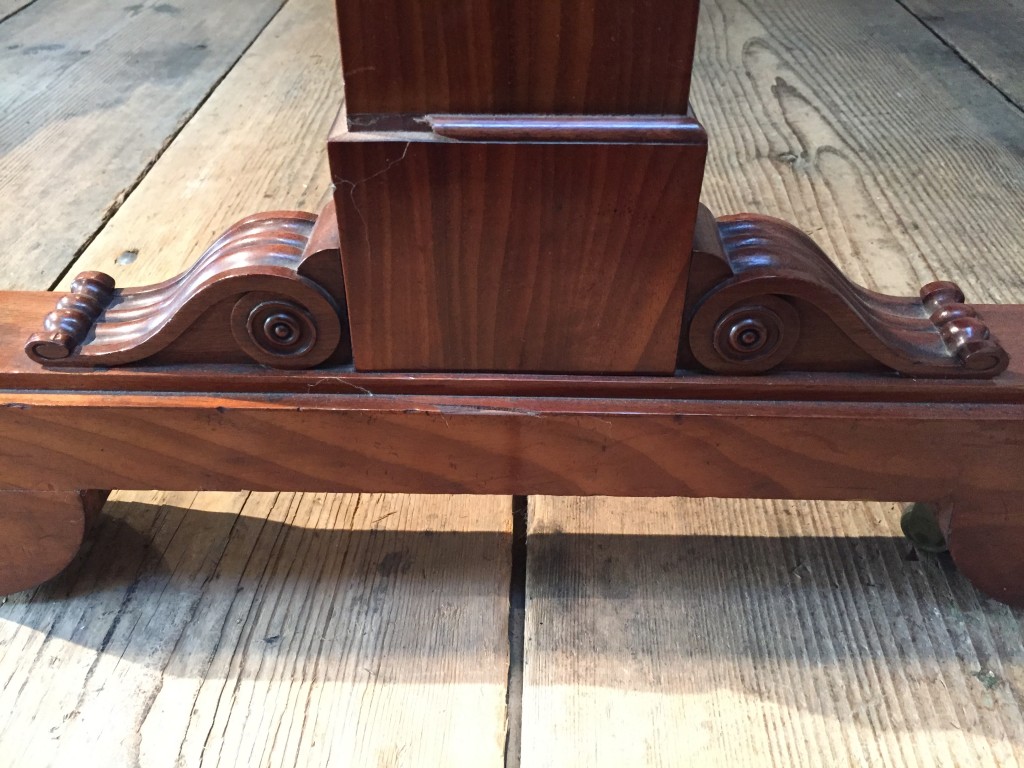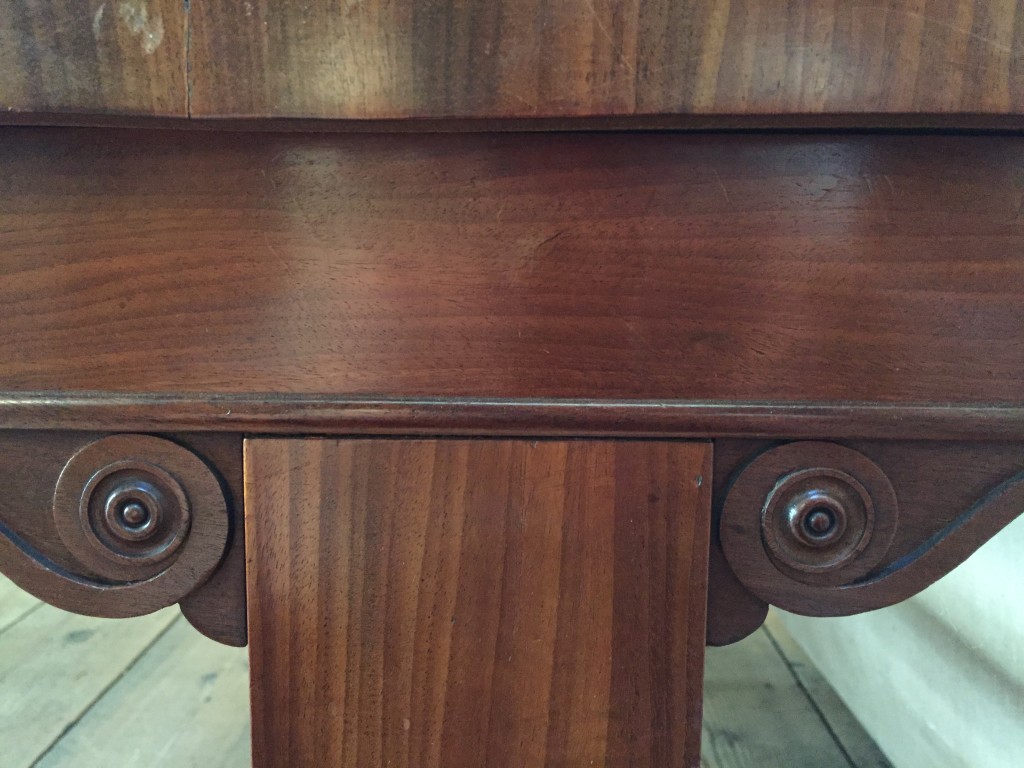The journey that Antique furniture takes over hundreds of years fascinates me. At Jamb we focus on the English Country house aesthetic, buying English antique furniture from the seventeenth to the nineteenth centuries. Sometimes I wonder what stories these pieces could tell? What different parts of the world have they seen and how many times have they crossed the seas?
I travelled to the USA on a buying trip with a business partner. The trip didn’t start as well as planned. A huge snow storm descended on the Canadian/ American border and we had to postpone buying which resulted in us watching ‘The Big Lebowski’ in the local village hall! After the snow cleared we did find some really interesting pieces including a beautiful mahogany table in the Grecian revival style.
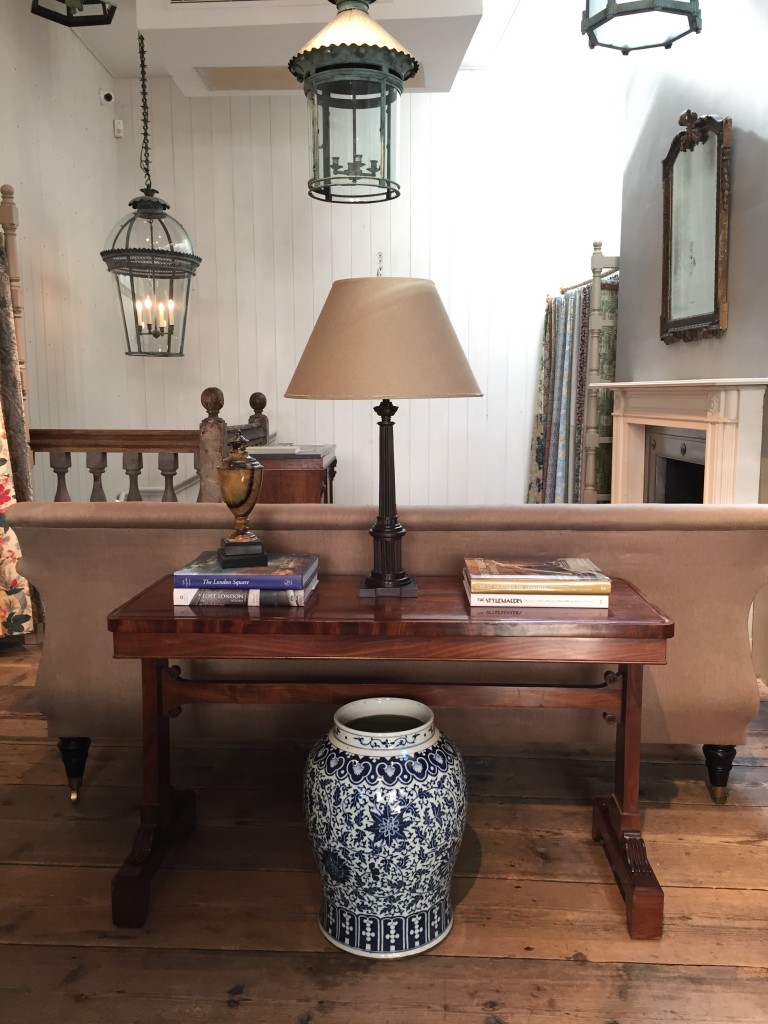
A Regency mahogany writing table sits amongst the reproduction lighting, fireplaces and Michael Smith fabrics.
There was an inscription on the underside. Pencil scrawled and partly faded.

“This table was made by Chippendale and Haig and was in the library at Ashburnham Park Sussex and was part of a suite of library tables, reading tables, etc. Sold by Lady Catherine Ashburnham”
Ashburnham Place is sadly one of the examples of houses that has been lost to history. It was one of the finest examples of an English Country house with gardens designed by Capability Brown, entrance Lodges by Robert Adam and architectural designs drawn up by Sir John Soane. The house was largely rebuilt in the eighteenth century following the principles of Neo-palladian architecture. A staircase was built by George Dance that rose three floors in the central entrance hall that must have been breathtaking. Athenian Stuart created painted wall panels in the drawing room.
The furniture too was made by the finest of that period including the table that now stands here in the showroom.
It was made at the earliest point of the nineteenth century by Thomas Chippendale the younger (1749-1822) and Haig (his father’s bookkeeper who became his partner) After his father Thomas Chippendale died in 1779, Thomas Chippendale the younger, although the eldest of eleven children, continued the Chippendale name.
The design of this Regency writing table draws on the Classical and Grecian Revival influences of the period, moving away from the former decorative Rococco and baroque styles.
Lady Catherine Ashburnham was the last in line when she inherited the estate from her uncle in the 1920’s. The house was damaged in the second world war after a fully loaded Marauder bomber crashed near by and dry rot set in. Lady Ashburnham died in the 1950’s and the contents of the house were sold at Sotheby’s and most of the house demolished in 1959. Ashurnham is run today as a Christian and education centre and retreat.
I was recently researching through old catalogues and came across the same table in an old Christies catalogue from 1984. It read “ A regency writing table with moulded rectangular top on solid trestle ends joined by a plain stretcher scrolling and shaped feet”
There are gaps that cannot be filled… Who bought it at the Sotheby’s sale in 1950’s and to whom it belonged I don’t know. But I do know after the Christies Sale in 1984 it made it’s way to America and thirty-two years later I bought it back to England. There is a romance in chasing around the world and finding the English treasures that make their way over the seas and even though so many of the English Country houses have been lost, the essence lives on through these beautifully crafted pieces.










